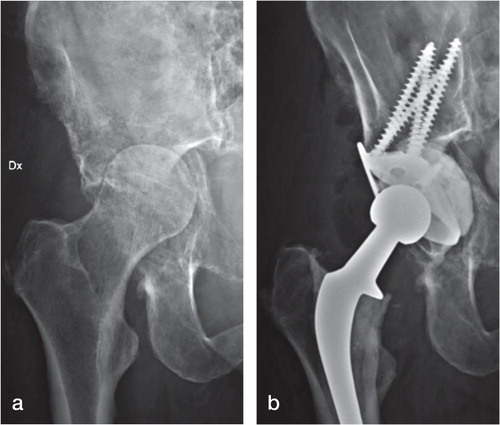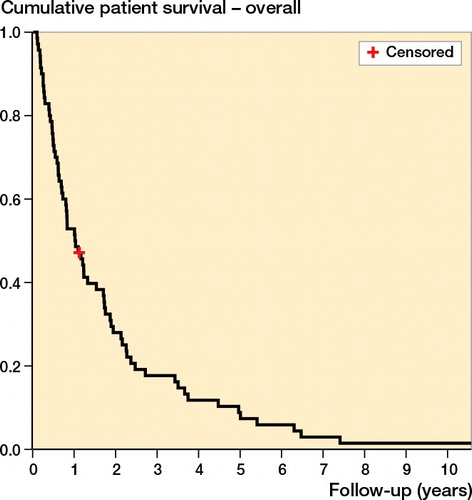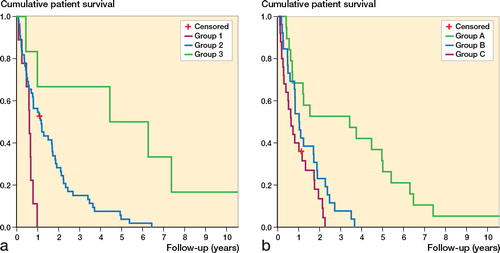Figures & data
Figure 1. A 66-year-old woman with metastatic destruction of the left acetabulum from breast cancer, and protrusion of the caput (a). Reconstruction was done with a Müller cage, multiple retrograde screws, and a cemented total hip arthroplasty using a Spectron femoral stem (b).

Figure 2. Overall survival of 70 patients surgically treated for acetabular metastasis with a protrusion cage and total hip arthroplasty. Median overall survival of the cohort was 12 months.

Figure 3. Overall survival in the 70 patients based on the type of the primary tumor (a) and the extent of the metastatic disease (b). Certain primary tumors and extensive metastatic involvement (multiple skeletal or visceral metastases) give a poor prognosis. Statistically significant differences between the groups were seen in both cases (p ≤ 0.05). For groups, see text.

Type of complication and patient survival, dichotomized at 1 year. Patients who survive for more than 1 year are more likely to present with prosthetic complications rather than biological ones, whereas patients who survive for less than 1 year are more likely to suffer from biological complications (p = 0.03)
